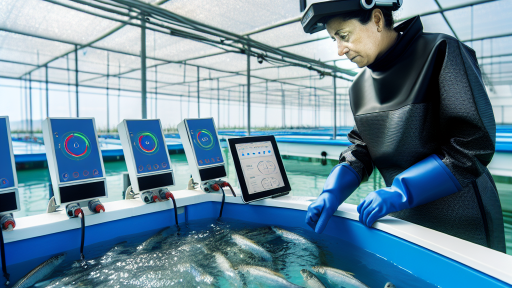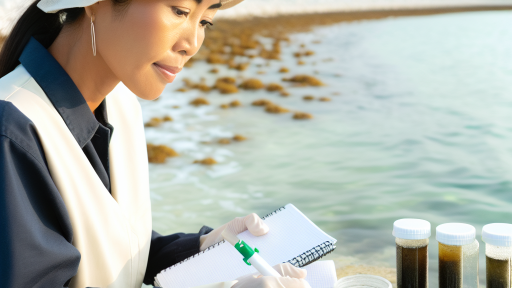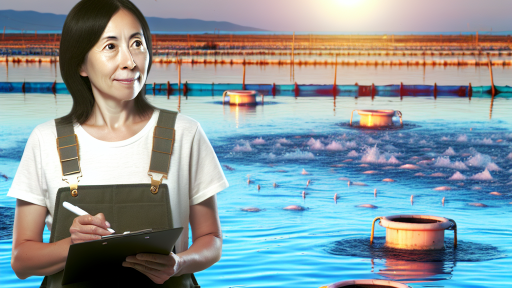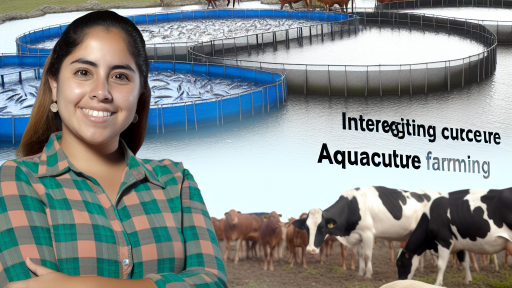Introduction to Aquaculture: Importance and Growth
Aquaculture has become a vital component of the global food system.
It plays a significant role in providing high-quality protein.
Additionally, aquaculture supports the livelihoods of millions of people worldwide.
The growing demand for seafood has fueled aquaculture’s expansion.
In fact, it has outpaced wild-capture fisheries in growth rates.
Moreover, aquaculture helps conserve wild fish stocks by reducing overfishing.
Today, it accounts for more than half of global fish consumption.
This sector continues to innovate through sustainable practices.
Technological advancements enhance fish farming efficiency and productivity.
Ultimately, aquaculture contributes to food security and economic development.
However, it also faces challenges, such as environmental impacts and disease management.
Investing in research and development can mitigate these issues.
Thus, understanding the dynamics of aquaculture is crucial for future growth.
Criteria for Selecting Fish Species for Aquaculture
Market Demand
Identify species that are in high demand in local and global markets.
Research consumer preferences and trends to inform your choices.
Transform Your Agribusiness
Unlock your farm's potential with expert advice tailored to your needs. Get actionable steps that drive real results.
Get StartedConsider species that have significant culinary value.
Evaluate price stability over time and identify profitable species.
Growth Rate
Select fish species with rapid growth rates.
Species that reach market size quickly can enhance profitability.
Research growth cycles within various aquaculture systems.
Fast-growing species can significantly affect production efficiency.
Feeding Efficiency
Choose species that require less feed to gain body weight.
Evaluate feed conversion ratios for different species.
Look for species that thrive on readily available and sustainable feed sources.
Efficient feeders can improve overall production costs.
Environmental Tolerance
Select species that can adapt to varying environmental conditions.
Consider salinity, temperature, and oxygen requirements.
Species with high environmental tolerance minimize operational risks.
Assess how each species performs in your local conditions.
Pest and Disease Resistance
Choose species that showcase strong resistance to common diseases.
Consult aquaculture specialists about disease profiles for each species.
Research proven management practices to maintain fish health.
Healthy fish populations lead to higher yields and lower losses.
Regulatory Compliance
Understand local regulations surrounding aquaculture operations.
Choose species that comply with environmental and economic guidelines.
Stay informed about restrictions on non-native species.
Compliance ensures sustainable practices and long-term viability.
Top Freshwater Fish for Aquaculture: Benefits and Challenges
Tilapia
Tilapia stands out as an excellent choice for aquaculture.
This fish grows quickly and adapts well to various environments.
Showcase Your Farming Business
Publish your professional farming services profile on our blog for a one-time fee of $200 and reach a dedicated audience of farmers and agribusiness owners.
Publish Your ProfileMoreover, it requires less protein in its diet compared to other fish.
Farmers enjoy lower feed costs as a result.
However, tilapia can be susceptible to diseases.
Maintaining water quality is crucial for tilapia farming.
Catfish
Catfish is another top contender for aquaculture operations.
It boasts a fast growth rate and can thrive in less than ideal conditions.
Furthermore, it has a high market demand in many regions.
Despite its benefits, catfish farming does come with challenges.
Farmers must manage their feeding practices carefully.
Overfeeding can lead to poor water quality and health issues.
Trout
Trout farming is highly popular due to its culinary appeal.
This species requires cooler water temperatures, making it ideal for specific climates.
Trout is also rich in omega-3 fatty acids, boosting its market value.
Nevertheless, managing trout farms can be labor-intensive.
Additionally, competition for clean water can pose challenges.
Carp
Carp is a versatile fish suitable for various aquaculture systems.
It can tolerate a range of water conditions, enhancing survival rates.
Furthermore, carp are efficient in converting feed into body mass.
However, carp can become invasive if released into non-native habitats.
Proper management practices are essential to mitigate this issue.
Pangasius
Pangasius is a lesser-known but highly lucrative aquaculture species.
This fish grows quickly and requires minimal care.
Its mild flavor has gained popularity among consumers.
On the downside, pangasius farming requires careful management of water quality.
Additionally, high competition from imports can affect local prices.
Uncover the Details: Breeding Strategies for Sustainable Livestock Farming
Top Marine Fish for Aquaculture: Benefits and Challenges
Overview of Popular Species
Many fish species thrive in aquaculture systems.
Selecting the right species is crucial for profitability.
Here are five popular marine fish for aquaculture operations.
European Sea Bass
European sea bass is highly valued in the culinary market.
This species is adaptable to various environments.
However, diseases like Vibriosis pose significant risks.
Management strategies can mitigate these challenges.
Red Drum
Red drum is known for its fast growth and high demand.
This fish offers excellent market value for producers.
Nonetheless, water quality management remains a challenge.
Regular monitoring ensures a healthy environment for growth.
Atlantic Salmon
Atlantic salmon is a staple in fish farming globally.
Farming practices have improved sustainability significantly.
However, high feed conversion ratios can raise costs.
Showcase Your Farming Business
Publish your professional farming services profile on our blog for a one-time fee of $200 and reach a dedicated audience of farmers and agribusiness owners.
Publish Your ProfileInvesting in feed efficiency can enhance profitability.
Tilapia
Tilapia is popular due to its rapid growth rates.
This species is resilient to various farming conditions.
Nevertheless, it can be vulnerable to diseases.
Consistent health monitoring is essential for success.
Mullet
Mullet is often overlooked yet highly nutritious.
This fish thrives in diverse environments, including brackish water.
Market demand can fluctuate, posing sales challenges.
Establishing strong market connections is beneficial.
Summary of Key Considerations
Selecting marine fish for aquaculture involves many factors.
Understanding market demand, growth rates, and challenges is vital.
Moreover, successful management practices enhance sustainability.
Ultimately, conducting thorough research supports informed decisions.
Gain More Insights: Preventing Genetic Diseases in Livestock
Sustainable Practices in Aquaculture: Species Selection for Environmental Impact
Importance of Species Selection
Selecting the right species is crucial for sustainable aquaculture practices.
This choice significantly influences environmental impact and resource utilization.
Appropriate species can enhance ecological balance in aquaculture systems.
Factors to Consider in Species Selection
Several factors determine the best species for your aquaculture operation.
First, consider the species’ growth rate and feed conversion efficiency.
Second, evaluate the environmental tolerance of the species.
Species that adapt well to local conditions reduce the need for modifications.
Finally, choose species with minimal impact on wild populations.
Best Species for Sustainable Aquaculture
Some fish species excel in sustainable aquaculture setups.
- Rainbow Trout is well-known for its rapid growth and high market demand.
- Pangasius offers excellent feed conversion rates and resilience.
- Tilapia adapts easily to various environments, making it popular worldwide.
- Catfish is another versatile species that thrives in diverse settings.
Minimizing Environmental Impact
Choosing native or well-adapted species minimizes ecological disruption.
Such species typically have lower nutrient requirements and disease susceptibility.
Incorporating polyculture can also enhance environmental sustainability.
This method combines multiple species, promoting a balanced ecosystem.
Future Trends in Species Selection
Innovative breeding techniques may improve species selection in the future.
Genetically improved varieties can enhance growth rates and disease resistance.
Moreover, research continues to focus on sustainable aquaculture practices.
Ecosystem-based management will guide future species selection processes.
See Related Content: Developing Genetic Improvement Plans for Livestock
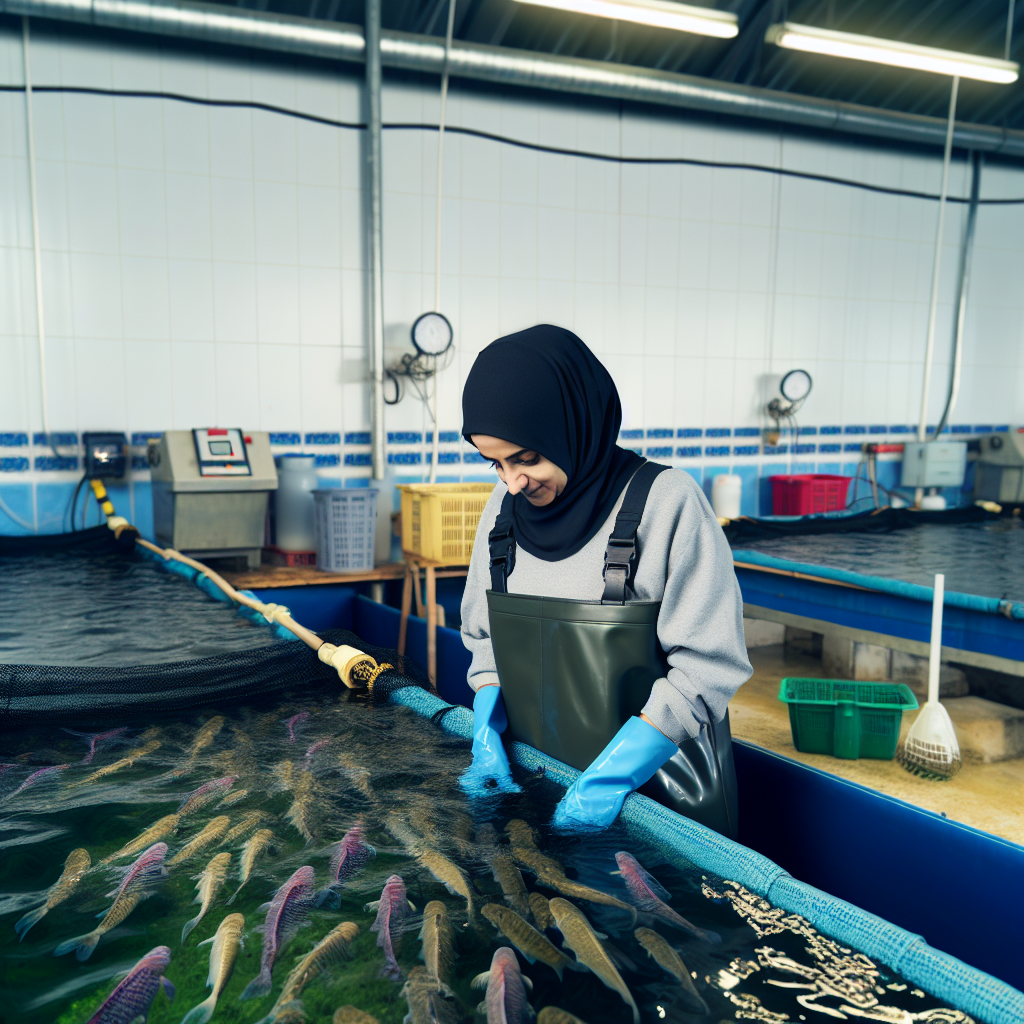
Economic Considerations: Market Demand and Profitability of Fish Species
Understanding Market Demand
The fish market is diverse and ever-evolving.
Consumer preferences play a significant role in shaping demand.
For instance, species such as salmon and tilapia consistently rank high in popularity.
Local markets may favor species based on regional tastes and culinary traditions.
Furthermore, sustainability concerns impact consumer choices today.
Consequently, eco-friendly farming practices can enhance market appeal.
Profitability of Popular Species
Evaluating profitability involves analyzing production costs and market prices.
Species like catfish and trout are often profitable due to their efficient growth rates.
Showcase Your Farming Business
Publish your professional farming services profile on our blog for a one-time fee of $200 and reach a dedicated audience of farmers and agribusiness owners.
Publish Your ProfileIn contrast, exotic species may require higher initial investments.
However, they can also yield higher market prices.
Aquaculture operators should consider local competition when determining pricing strategies.
Factors Influencing Economic Success
Several factors determine the financial viability of aquaculture operations.
These include feed costs, water quality, and stocking density.
Moreover, supply chain logistics significantly affect profitability.
Operators should develop strong relationships with local suppliers and distributors.
Effective marketing strategies can also create opportunities for sales and partnerships.
Assuring Market Stability
Market stability is crucial for sustained profitability.
Diversifying fish species can buffer against market fluctuations.
Regularly assessing consumer trends will help operators adapt their offerings.
Additionally, engaging in community outreach can widen market access.
Well-informed decisions and proactive planning promote long-term success.
Find Out More: Economic Benefits of Investing in Fish Farming
Innovative Techniques in Aquaculture
Importance of Species Selection
Choosing the right fish species is crucial for successful aquaculture operations.
Some species yield better growth rates and resistance to diseases.
Moreover, specific species thrive in varying environmental conditions.
Top Fish Species for Aquaculture
Certain fish species are particularly suited for aquaculture success.
Tilapia is one of the most popular choices worldwide.
This fish is fast-growing and adaptable to various environments.
Salmon also ranks high due to its high market demand and profitability.
Catfish is another viable option known for its hardiness and rapid growth.
Innovative Farming Techniques
Advanced techniques can significantly improve aquaculture yields.
Recirculating aquaculture systems (RAS) help maximize production.
These systems recycle water, reducing waste and improving sustainability.
Aquaponics is another method that combines fish farming with plant cultivation.
This technique uses fish waste as a natural fertilizer for plants.
Environmental Considerations
Understanding environmental impacts is essential for aquaculture operations.
Using native species can help maintain local biodiversity.
Additionally, responsible feed sourcing minimizes ecological footprints.
The adoption of sustainable practices enhances long-term viability.
Future Trends in Aquaculture
Technology continues to evolve and influence aquaculture positively.
Drones and sensors can monitor fish health effectively.
Data analytics helps optimize feeding and breeding practices.
Furthermore, biotechnology advances genetic improvements in fish species.
These innovations promise enhanced productivity and sustainable practices.
Case Studies: Successful Aquaculture Operations and Their Chosen Fish Species
Case Study of Aqua Innovations
Aqua Innovations is a leading aquaculture company in Florida.
They focus on sustainable practices to enhance fish farming.
Tilapia has become their primary choice for farming.
This species thrives in warm climates and adapts easily.
Showcase Your Farming Business
Publish your professional farming services profile on our blog for a one-time fee of $200 and reach a dedicated audience of farmers and agribusiness owners.
Publish Your ProfileAdditionally, it offers a high protein yield.
They employ recirculating aquaculture systems to minimize water use.
Consequently, Aqua Innovations has become a model for sustainability.
Success Story of FishFarm Ltd.
FishFarm Ltd. operates a successful trout farm in the Pacific Northwest.
They leverage the region’s cold, clear waters for optimal growth.
Rainbow trout is their main species due to high consumer demand.
This species is known for its fast growth and excellent flavor.
Moreover, they focus on organic feed to enhance fish quality.
As a result, FishFarm Ltd. has secured a loyal customer base.
Growth of Coral Sea Aquaculture
Coral Sea Aquaculture has gained recognition for its shrimp farming.
Located in Louisiana, they specialize in Pacific white shrimp.
Their operations mimic natural habitats for better growth rates.
They also emphasize biosecurity measures to prevent disease.
Consequently, their shrimp is highly sought after by restaurants.
Coral Sea Aquaculture has become a leader in high-quality seafood.
Innovation by Green Wave Fisheries
Green Wave Fisheries is known for its sustainable sea bass operations.
The company utilizes open sea cages to raise fish naturally.
European sea bass has shown remarkable growth in their systems.
This species is not only tasty but also increasingly popular.
Additionally, they promote eco-friendly practices among local fishermen.
Thus, Green Wave Fisheries contributes to a sustainable fishing community.
Progress of Blue Horizon Aquatics
Blue Horizon Aquatics focuses on farming barramundi in Australia.
This fish is renowned for its versatility and rich taste.
They implement innovative techniques to ensure optimal health.
The farm uses a combination of tidal and tank systems.
Consequently, they have achieved a low ecological footprint.
Blue Horizon Aquatics has established itself as an industry pioneer.

